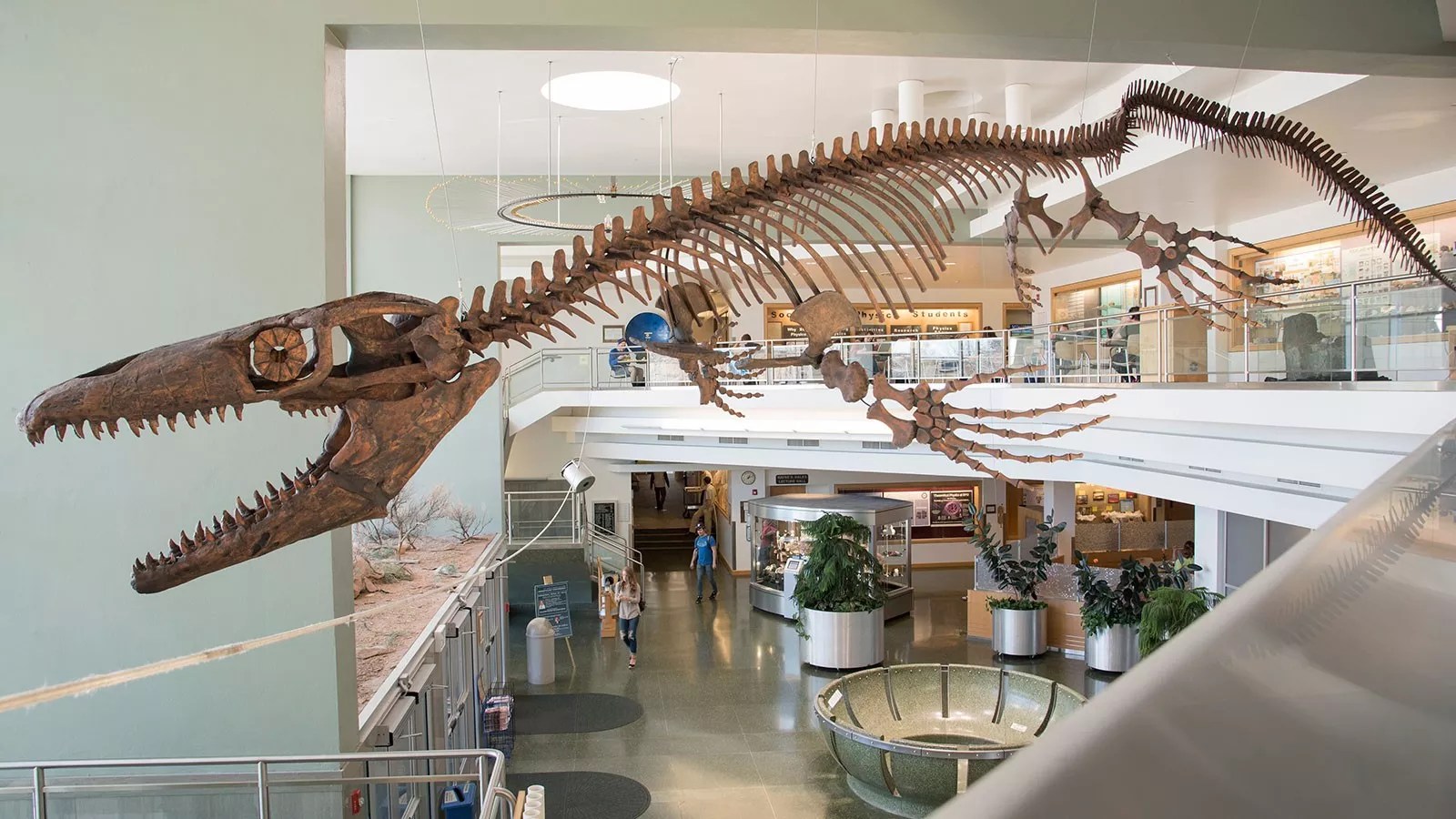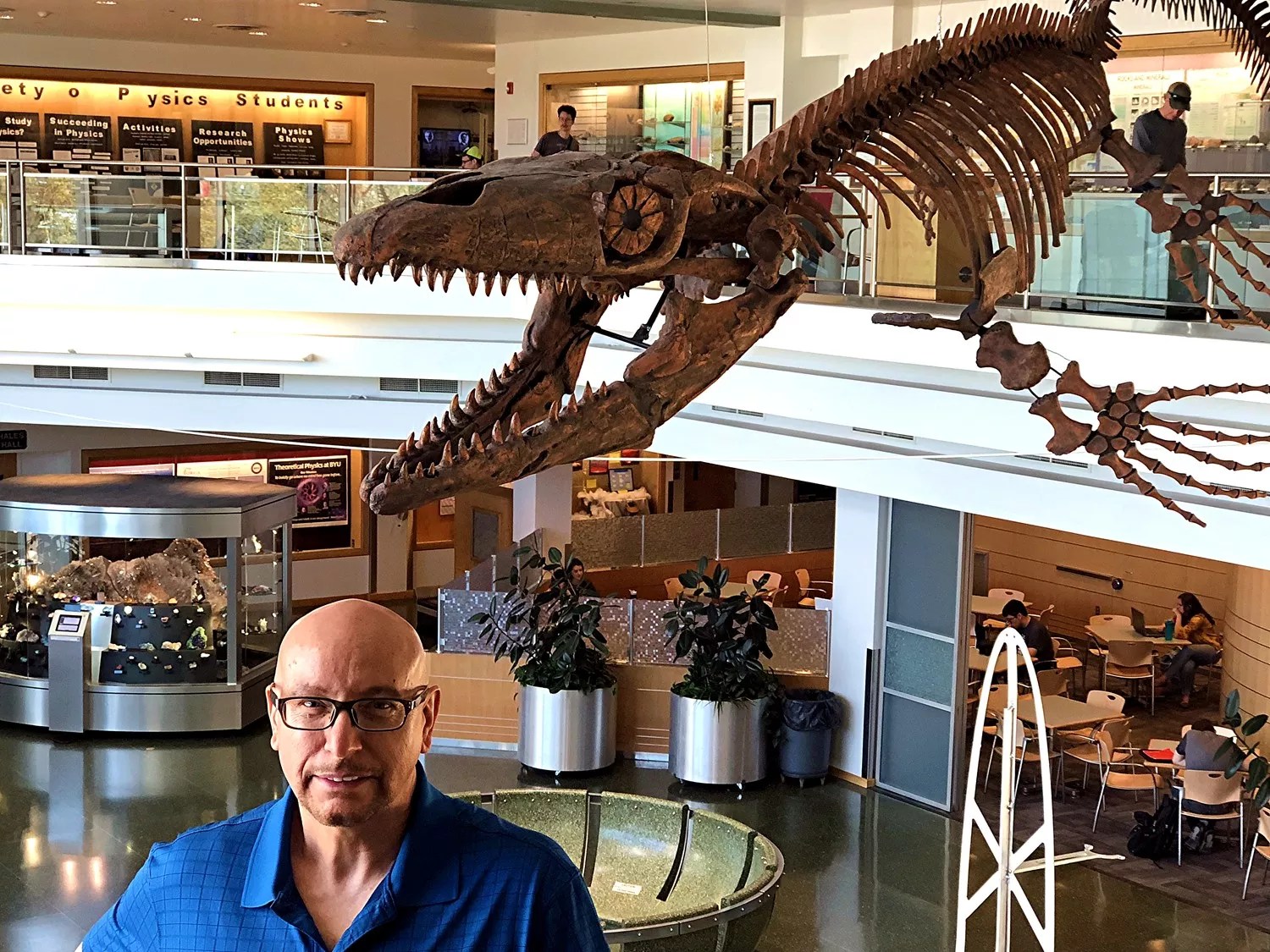
Courtesy of BYU

Audio By Carbonatix
Gary Thompson was fifteen when he found the fossils near Cedaredge in Delta County. It was 1975, and he’d just gotten interested in paleontology after a school field trip to scenic Escalante Canyon, a red-rock canyon where he and his classmates learned about the dinosaur bones and petrified dung specimens regularly found in the area.
“That really piqued my interest,” Thompson recalls. “I became kind of a rock hound. I enjoyed going out and searching for fossils and such.”
But a move with his mother to New Mexico from western Colorado was about to take him from some of his favorite hunting grounds. “I wanted to fossil-hunt one more time before we left,” he says. “So I asked my mom to drop me off out near the rodeo grounds.”
As Thompson scanned the nearby hillside, a mound of dirt with some rock fragments caught his eye. When he arrived at the site, he initially mistook small bone fragments for petrified wood. Upon closer inspection, he realized that they were bones and began scraping at the dirt with a sharp rock, exposing more and more vertebrae as he did so.
Will you step up to support Westword this year?
At Westword, we’re small and scrappy — and we make the most of every dollar from our supporters. Right now, we’re $21,000 away from reaching our December 31 goal of $50,000. If you’ve ever learned something new, stayed informed, or felt more connected because of Westword, now’s the time to give back.
“I was real excited,” Thompson says. “I knew I’d found something pretty significant there. I knew it was more than I could handle.”
Thompson covered his find and later showed it to his science teacher, Gordon “Dick” Jones, who got word of the discovery to James “Dinosaur” Jensen, a paleontologist for Brigham Young University. Jensen continued digging up the fossils, remnants of a mosasaur, a type of hulking, carnivorous lizard that terrorized the sea 92 million to 66 million years ago. But neither Thompson nor Jensen knew exactly how significant the discovery was at the time.

Gary Thomas poses with the replica of the mosasaur specimen he’s credited with discovering.
Courtesy of Gary Thomas
The fossils went to BYU‘s Eyring Science Center, where they inspired a full-sized display model. But recently, paleontologist Josh Lively studied the actual specimen. After detailed research of the skeleton and a phylogenetic analysis, he determined that it had been mislabeled as genus Prognathodon. Instead, he determined it was a new genus entirely, which he named Gnathomortis stadtmani, derived from the Greek and Latin words for “jaws of death.”
Lively’s findings were published in the most recent issue of the Journal of Vertebrate Paleontology. The discovery of the new genus “highlights the potential for important paleontological discoveries in the Mancos Shale of western Colorado and eastern Utah, an understudied unit compared to other marine formations across the Western Interior of North America,” he notes in the study’s conclusion.
“What sets this animal apart from other mosasaurs are features of the quadrate – a bone in the jaw joint that also forms a portion of the ear canal,” Lively says in an announcement touting the report. “We now know Gnathomortis swam in the seas of Colorado between 79 and 81 million years ago, or at least 3.5 million years before any species of Prognathodon.”
Lively adds: “I’m excited to share this story, which represents years of effort by many citizen scientists and scholars. It’s a reminder of the power of curiosity and exploration by people of all ages and backgrounds.”
People like a fifteen-year-old Colorado boy.
Thompson, who now lives in Denver and works in the interior-design industry, has continued searching for fossils since that fateful day of discovery 45 years ago. He hasn’t found anything else of such magnitude, but he still enjoys being outside, looking for relics of creatures who occupied the area eons ago.
“I’m so happy,” Thompson says of Lively’s revelation. “When you’re fifteen, you don’t always think things through, but I knew what I had found was very important. And I knew it was something I didn’t want to disturb. It makes me feel proud that I did the right thing.”